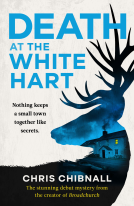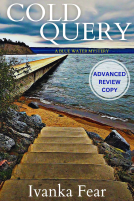
England’s Anglo-Saxon Heritage
A County-by-County Exploration
by Geoff Marshall
This title was previously available on NetGalley and is now archived.
Send NetGalley books directly to your Kindle or Kindle app
1
To read on a Kindle or Kindle app, please add kindle@netgalley.com as an approved email address to receive files in your Amazon account. Click here for step-by-step instructions.
2
Also find your Kindle email address within your Amazon account, and enter it here.
Pub Date 29 Jun 2022 | Archive Date 4 Aug 2022
Talking about this book? Use #EnglandsAngloSaxonHeritage #NetGalley. More hashtag tips!
Description
The Anglo-Saxons held sway in this country from the Romans departing until the Norman Conquest; a period of over 600 years: in other words the same length of time from the late medieval England of the War of the Roses until the present day. This Anglo-Saxon legacy has endured. They gave us our language, place names, an English identity and an administrative system of dividing the country into shires which is still with us today.
This Guide brings the tremendous accomplishments of the Anglo-Saxons to life. It is written in an accessible and clear way and is aimed at the general reader but could also be used as a springboard to more advanced study. The book is presented in two parts. Part One is an overview of the course of events in Anglo-Saxon England. Its purpose is to put Part Two into context. Part Two is a richly illustrated place-by-place exploration of what there is to see and enjoy today of the Anglo-Saxon world.
The book is designed to be used in the field by those who enjoy exploring our country with guide book in hand, as well as by the armchair reader. All well-known places are described, from the magnificence of Bede’s Jarrow and Monkwearmouth, to the wonderful churches at Brixworth and Earl’s Barton. As well as the famous, more secret and hidden treasures are described from the fells of Cumbria to the South Downs in Sussex. The simple but breath-taking architecture of Anglo-Saxon churches, their intricate sculpture and captivating historical associations are all waiting to be discovered.
A Note From the Publisher
Available Editions
| EDITION | Paperback |
| ISBN | 9781803131641 |
| PRICE | £19.99 (GBP) |
Featured Reviews
 Pat B, Reviewer
Pat B, Reviewer
An accessible read for anyone wanting to learn about Anglo Saxon England. That isn’t to say it is an easy read there is a great deal of depth and factual information. However it is well laid out dealing with the progress and process starting with the organisation of the early settlements and the development of rule and religion, moving onto individual counties.
Lastly and this forms almost half of the book, the Author gives a County by County overview of sites and finds of interest with accompanying photography. There are detailed reference lists and a n extensive bibliography.
On a personal note my only niggle is that the author places Great Urswick in Lancashire, it hasn’t been part of thet County since the boundary changes of 1974 and is now firmly ensconced in Cumbria
 Faith W, Reviewer
Faith W, Reviewer
England's Anglo-Saxon Heritage by Geoff Marshall is a book about the Anglo-Saxons and the sites they left.
This book was interesting. I especially liked the history part, it gave a lot of information in a small amount of space. It goes over important figures and important places. There were many pictures, which helped to show what they were talking about, especially in the sites part of the book.
It is written a bit confusingly though. The writing style is not easy to read, and the information is not written clearly enough. I also felt that the book was a bit exclusionary, it depends on you knowing the geography and names in England, which makes in difficult for non British people to understand without a map.
I would recommend this book for anyone in England looking to visit these sites, but not if you are simply trying to learn about the Anglo-Saxons.
Stretching from the Romans (410) to the Normans (1066), the Anglo Saxon era saw the rise of the seven kingdoms and their gradual coalescing through the viking wars, into the country we now know as England.
The book opens with a helpful summary of the key people of the era. Most of the persons mentioned are saints or Kings, as those were the celebrities of their day. The information is clear and its significance is always explained, so that the first section of the book provides a good summary of Anglo-Saxon history through its events and its persons.
But there were some unexpected editorial displacements of material. For example, St Etheldreda is one of the prominent Anglo-Saxon saints as she was also royalty. Her shrine was one of the main pilgrimage centres in the middle ages. Yet she is omitted entirely from the section mentioning significant people, and she is covered instead when the book’s focus is upon Cambridgeshire, where she happened to live.
Whilst we get a good overview of the significant figures, it sometimes tended to be cursory. For example, the section on King Offa ends with a question about what we are to make of him as some people praise him and some criticise him (p34). Ideally the reader wants to know why there is a difference of opinion, or at least to have a footnote so that it is possible to chase up the differences for themselves. But the section just cuts off and moves on.
The second half of the book is a place by place summary of Anglo Saxon remains, and the book becomes a little ‘encylopedic’ as it lists artefacts in each place. Although there were some photographs, I think more were needed, as verbal descriptions of churches and hoards often failed to do justice to the beauty of the objects being discussed. Even the famous helmet from the Sutton Hoo burial didn’t merit a picture.
The book describes itself as a field guide, and I can imagine that it would be useful for someone visiting a specific part of the country, as they could look up some Anglo-Saxon places to visit in that part of the country. But with that in mind, it would have been useful if the book could have included some maps and labelled indications of what we think actually counted as significant Anglo-Saxon places and routes.
Overall, this is an interesting book and a good introductory account for readers who want to know more about the Anglo-Saxon period and its visible remains. Readers who already have a basic understanding of the period will probably find the book a little limited.
This is a review of an ‘advanced review copy’ (ARC) of the book.
This book covers a massive period of history and does so in a way which allows the reader to gain insights into key events. I enjoyed learning about some of the less commonly taught aspects of this period and congratulate the author on their careful research into those lesser known areas. This book will appeal to anyone wanting to learn about this era and offers a very easy to read and comprehend account.
An ideal book for explorers. Both those who put on their wellies and traipse across muddy fields and the other kind who prefer to put their feet up on a stool in front of the fire and investigate from books and the Internet.
This is a fascinating book, overflowing with facts and splendid colour photographs. Geoff Marshall has visited most of the sites he has written about, missing out only when buildings have been locked and unattended.
There is surely a revival of interest in this period with series like The Last Kingdom and Vikings finding large audiences.
The author's style is most appealing and obviously a labour of love.
Readers who liked this book also liked:
Christopher Stephens; Louise Radnofsky
Biographies & Memoirs, History, Nonfiction (Adult)



















